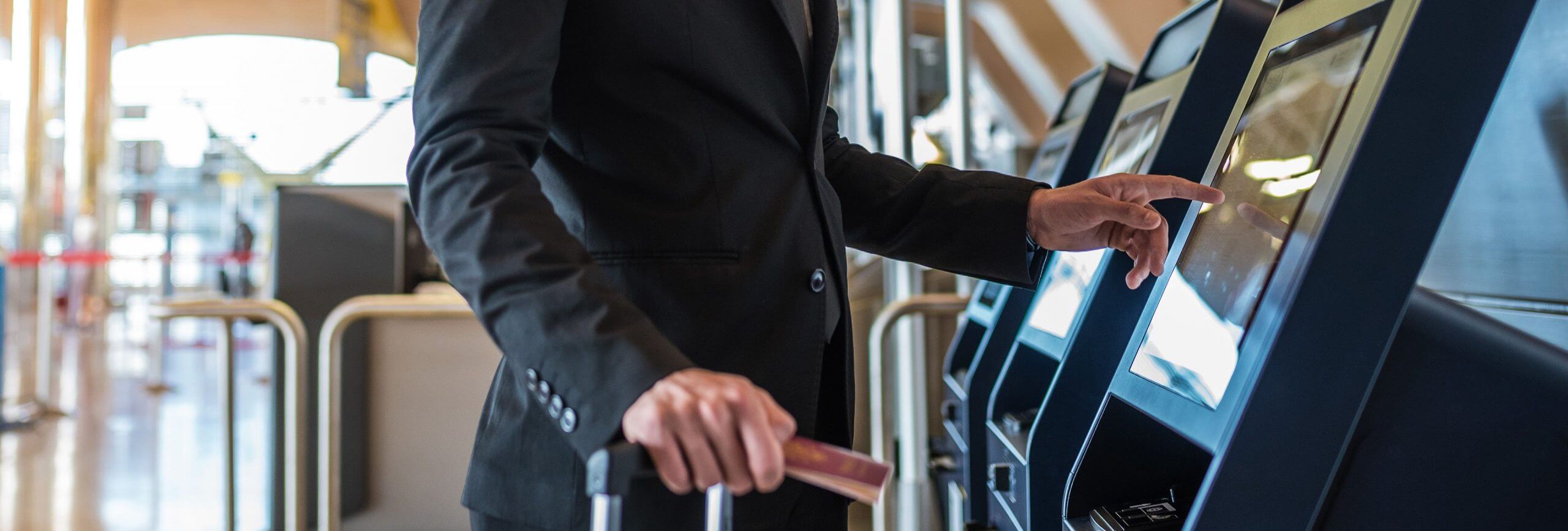According to this healthline.com article, public access terminals with touchscreens are a major risk of transmitting infectious diseases. Keypads to enter a PIN code or remote-control units in public areas are not far behind. Whether it is because of COVID-19 or many other health reasons, staying away from surfaces that are touched by too many people seems like a smart idea these days. Except for one problem: How are we expected to get money out of the ATM, pay for a subway ticket, get our boarding pass, confirm the correct amount at the supermarket, or change the air-conditioner settings in a conference room or the TV channel in a doctor’s waiting room?
Over the last few decades, a lot of self-service systems have been rolled out all over the world, all sharing one common characteristic: touch interaction.
Retrofitting these millions of appliances for a zero-touch world seems like a tall order and would be prohibitively expensive if it was done by replacing all the existing equipment. However, there is a better way: mainstream voice assistants like Amazon’s Echo or Google Assistant have built-in voice commands to control connected devices. And with a small amount of work, they can be made to cooperate with legacy tools and systems that were never expected to be driven by voice commands.
At ELEKS, we have created a prototype that uses voice controllers (Amazon Echo, Google Assistant or custom-built devices) to manage legacy non-connected appliances like air conditioners, heating systems or television sets. The system works by instructing the voice controller to accept commands like “set temperature to 20 Celsius” or “switch to channel 7”. The voice controller is connected to a Raspberry Pi that will then send the corresponding infrared signal to the legacy device without the need for the remote control to be touched.
The ELEKS Deputy CTO Vitalii Yuryev who created the prototype with a small team of software engineers comments “this technique allows very rapid deployment and opens additional integration possibilities – for example, air-conditioners could become weather-aware or turn themselves off when people leave the room”.
Making the legacy appliances cooperate with the IoT infrastructure required parsing the commands sent by the remote-control unit and translating them for the Raspberry Pi. An additional benefit is that the Raspberry Pi can also be used as the IoT controller for several types of legacy devices. The system is not limited to interactions via infrared – it is able to communicate via Bluetooth controllers or use hardwired connections if necessary.
This architecture intercepts the control chain built into the legacy device to allow for an additional user interface – in this case through voice commands. A very similar strategy could be used for almost any public terminal. The effort varies depending on the types of interaction with the device and the number of voice commands to be implemented. But the cost and time to market in all cases will be far less than having to roll out an entirely new set of appliances. In cases where the kiosk is powered by an iPad or Android tablet, the fix could be as simple as a software update and the addition of a microphone.
Yuryev cautions, “the biggest challenge will be environmental noise requiring the use of high-quality microphones or noise reduction strategies.” And he points out that security-conscious applications may prefer to avoid a connection to devices like Amazon’s Alexa and instead opt for custom integration of a non-connected device that has better options to restrict remote access.
The ELEKS IoT Controller works with both types of voice controllers. While transmitting things like PIN codes by voice will make the process implicitly vulnerable to bystanders who overhear the conversation with the machines, some areas will continue to require the equivalent of today’s touch interfaces, but at least this kind of interaction can be minimized.
Retrofitting legacy appliances with a zero-touch user interface has become very simple with the ELEKS IoT Controller and can be deployed for almost any public kiosks and terminals.
Are you looking for ways to introduce a whole new level of usability and security to your software systems? Do you need a smart team of software experts ready to meet any gaps in your expertise or resources? Get in touch with us today to discuss the options!

